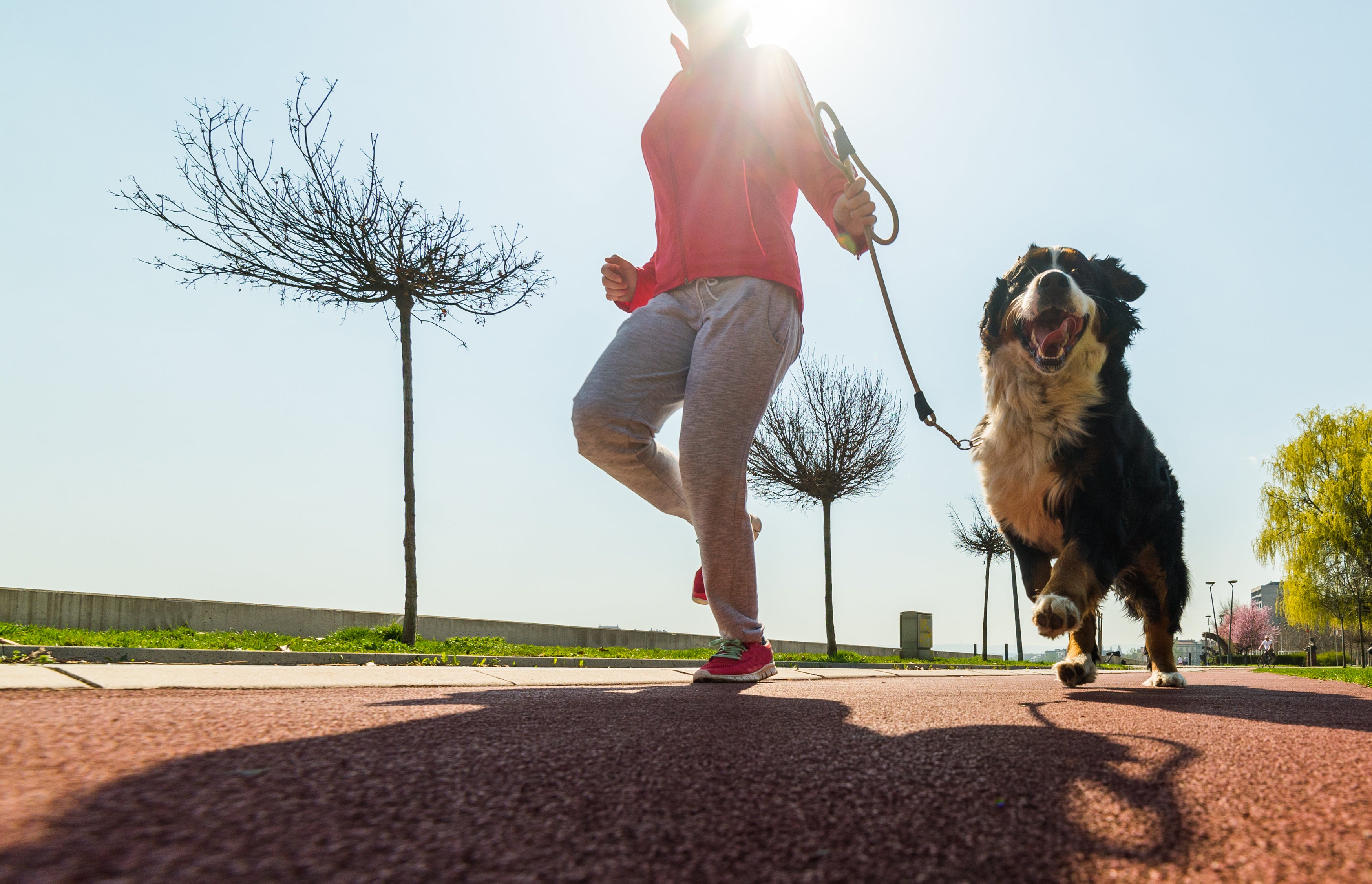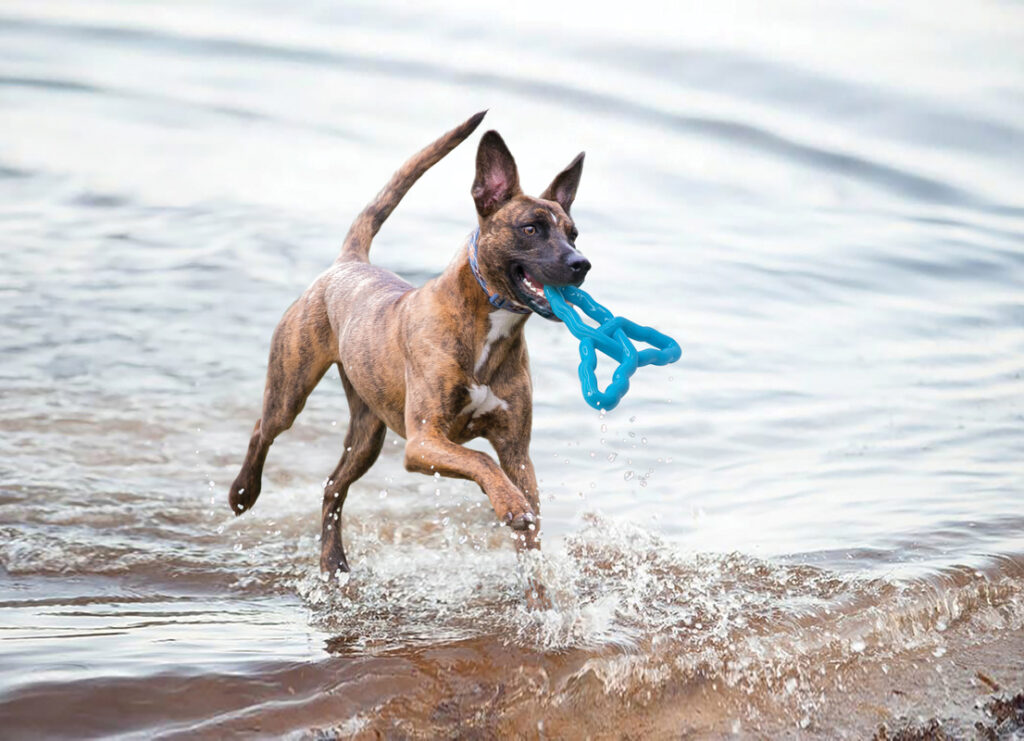Does your furry friend have a chonky waist? Is it difficult to feel their ribs? Humans aren’t the only ones struggling with weight problems. Our fur balls can carry too much weight on their four legs, too. As you could imagine, the negative health impacts for a dog are the same as for humans. While it’s not always easy to control weight, it’s up to you as a responsible pet parent to get your dog back on track. To help you out, we’ve put together this handy guide with dog weight tips so that you can get your overweight pup into shape without them feeling deprived.
How Do Dogs Get Overweight?
There’s more than one reason why your dog is overweight. Some of the most common causes include:
Overeating
Let’s start with the most obvious. Your dog may be eating too much—this could even be because they’re consuming one too many treats!
Lack of Activity
Some breeds are less active than others so they need stimulation like playtime and regular walks in order to be get exercise. Like humans, eating and sleeping is inevitably going to lead to weight gain—especially with age.
Mobility Issues
Your dog may experience pain from arthritis or another chronic condition, which leads to lower activity levels and weight gain.
Chronic Illness
Conditions such as Cushing’s disease can cause weight gain because dog’s adrenal glands are producing an overproduction of cortisol, the chemical that controls their weight, keeps blood sugar balanced, fights infection, and helps them respond to stress. Another culprit of the creeping pound is an underactive thyroid (hypothyroidism) which is more common for breeds like golden retrievers and Doberman pinschers.
Genetics
Just like you may have your mother’s hips or your father’s belly, your dog may be predisposed to weight gain based on their breed. Those who are more inclined to have weight issues include rough collies, Shetland sheepdogs, beagles, American cocker spaniels, Labrador retrievers, basset hounds, Norwegian elkhounds, and Cavalier King Charles spaniels.
Surgery
If you’ve had your dog neutered or spayed, don’t be surprised if you notice the creeping pound. Neutering tends to affect metabolism and energy levels.
How Being Overweight Negatively Impacts a Dog’s Health
The ramifications of being an overweight dog mirror those that humans experience, too. That means strain to joints and the back, which makes it more difficult to be active; respiratory issues; high blood pressure; cancer risk; reduced life span; diabetes; and arthritis. It’s also possible that your dog could develop depression or anxiety issues because of these negative side effects. From your side, you could be looking at some serious expenses if your dog becomes ill.
Dog Weight Loss Tips
When starting a weight loss program, it’s important to get your vet involved so he/she can help monitor your dog’s progress (weigh-in sessions), provide tips on portion control and caloric needs, and to make sure there aren’t any underlying health issues. Even the slightest change in weight can significantly improve your pups quality of life! Reach out to a licensed US vet 24/7 in your KONG Club app for guidance and support with pet weight loss.
How to Put Your Dog on a Diet
Enforce Portion Control
Before anything else, make sure you know the proper portion size for your dog’s age and size as well as what their ideal weight should be. Adjust portions and caloric needs with age. Your vet will be able to assist you in this area if you’re not sure.
Read Food Labels
Low-quality food contains little to no vitamins and minerals. Plus, it often contains meats (or meat substitutes) that are downright unsafe in addition to being unhealthy. The best dog food may be a bit more expensive, but it’s worth the cost because it’s formulated in a way that vital nutrients can be easily absorbed. This means your dog will be able to digest the food and gain nourishment from it before getting rid of waste products during the next bathroom break.
While a dog’s diet is essentially comprised of meat, they are not firm carnivores like the friendly feline. Hounds also need a mix of fruits, veggies, and whole grains, all of which supply an extra dose of vitamins and minerals. It’s not uncommon to see these nutritional powerhouses on the ingredient list of the best dog food, along with human-grade (aka high-quality) meat, of course. Remember, don’t fall into marketing tactics. Always read labels to double-check ingredients and nutritional sufficiency and read dog food reviews from other enthusiastic animal lovers like you.
Swap Out Treats for Veggies
While you don’t have to ban treats (more on that later), you can replace them on occasion with some vegetables. This is a good tactic as you don’t want your dog to feel deprived of eating because they’re on a diet. The key is knowing which vegetables are safe for them to eat. Only feed your hound apples, bananas, blueberries, Brussels sprouts, cabbage, cantaloupe, carrots, celery, strawberries, and watermelon. As an occasional treat (the calorie count is high), you can also feed them cashews and cheese!
Opt for Diet-Friendly Treats
Treats are a great tool for rewarding and reinforcing your dog’s good behavior, so that could mean socialization, general training, or following instructions. Of course, it’s all too easy to overdo it with treats at the same time, especially when your dog is giving you those irresistible puppy dog eyes. As a general rule of thumb, dogs should not receive more than 10 percent of their daily caloric intake from treats. If you’re not sure what that is, don’t hesitate to ask your vet as different dogs have different needs. Using the 10 percent measure as a guide, the next trick is determining how you’re going to spread those treats out over a 24-hour period. Make a conscious effort each and every day to make sure that you’re not overdoing the extras as this could lead to finicky eating with your dog’s regular food (their main nutritional source) and weight gain.
The best treats for dogs on a diet are low-fat dog treats that are calorie-controlled. Just remember that even though these nibbles are lower in calories, they shouldn’t exceed that 10 percent guideline. In fact, consider speaking to your vet to see if the amount should be lower depending on the current status of your dog’s weight. Lastly, always remember that you shouldn’t be giving treats as a sign of love. If you really love your hound, you’ll do what’s necessary to ensure they live a long and healthy life.
Best Weight Loss Exercises for Dogs
When it comes to weight loss for dogs, diet is only one piece of the puzzle. Exercise is key but it’s going to be up to you to make sure your dog is active every single day. Just think of yourself as your dog’s personal trainer!
- If your dog is severely obese, make sure you talk to your KONG Club vet first so that you can implement an exercise program that won’t jeopardize your hound’s health even further.
- Aim for 20–60 minutes of exercise per day. If frequent exercise is something new for your doggo, start slowly and work your way up to a longer duration of time—this should gradually get easier to do as your dog begins to shed some pounds!
- When it comes to the best exercises to help your dog lose weight, there’s no reason to reinvent the wheel. The key is that you’re consistent and your pup gets a decent amount of activity every single day. Brisk walking, a game of fetch, and swimming are all great options. Running is also an excellent activity, but depending on how overweight your dog is, you may have to ease into jogging/running as it may be too difficult for your canine in the beginning.
- Make sure you’re not overexerting your dog and be mindful of heatstroke when temperatures begin to rise.
Motivating Low-Energy Dogs
Some dogs simply aren’t full of energy—and we’re not just talking about seniors. Motivating a low-energy dog isn’t easy, but it’s not impossible.
- Find toys and games that your dog likes through the process of trial and error.
- Make exercise fun by setting up an agility course or doggie treasure hunt.
- Establish a consistent activity routine, such as a daily morning walk, so that your dog gets used to the regularity of physical activity.
- Set up a doggy play date—it’s possible your hound will be more motivated by another fur ball more than you!
- Play when your dog is in the mood to play. Brushing your dog off is liable to discourage him even further.
- Find activities you can do together, such as walking, running, a game of fetch, etc.
Keeping the Weight Off
You successfully helped your dog shed those unwanted pounds. Congratulations! Now, how can you ensure weight gain doesn’t creep back in?
- Adjust your dog’s caloric intake to meet the needs of his current weight.
- Don’t ease up on exercise.
- Keep treats within the 10 percent (or under) suggestion.
- Continue providing healthy snacks like veggies.
Get your Dog Moving with KONG Club
Make getting in shape more fun for your dog by talking with your KONG Club pet coach, Simply tell us a little bit about your dog and we’ll do the rest.



